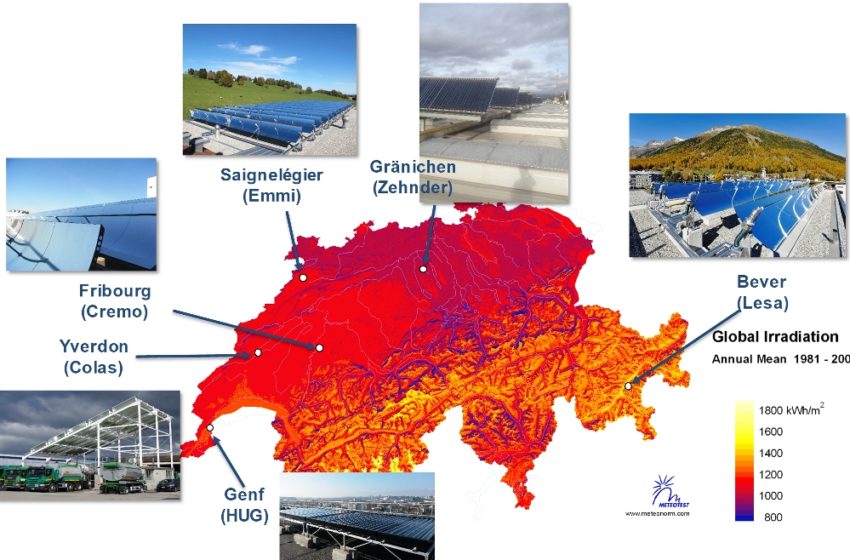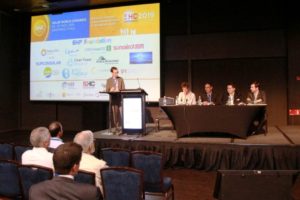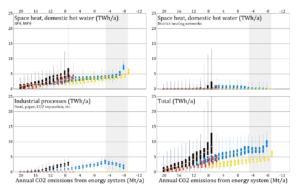Swiss study identifies 5.6 GWth of SHIP potential at up to 100 °C
April 26, 2019
Theoretically, Switzerland would need to install 8 million m² of collector area (5.6 GWth) to exploit the full potential of industrial solar heat below 100 °C, considering an annual yield of 400 kWh/m². The related study, titled Sol-Ind Swiss, was presented by its author, Mercedes Rittmann-Frank, a researcher at the SPF Institute for Solar Technology in Rapperswil, during the SPF Industry Day on 5 March. The map shows the six systems that provide solar heat for industrial processes (SHIP) in Switzerland and are part of an SPF monitoring programme spanning several years. They supply heat to three dairies, a paint shop in a radiator factory, a sterilisation unit in a hospital, and a bitumen production facility.
Source: SPF
In 2016, final energy consumption reached 855 petajoules (PJ) in Switzerland, with industrial facilities using 18 % of the total, or 155 PJ. They converted more than half of the energy, that is, 59 % or 91 PJ, into heat and only 41 % into electricity, and used 69 % of the former in industrial processes, followed by space heating and hot water at 21 %. The SPF study focused only on process heat, which came to 66 PJ.
According to Rittmann-Frank, solar process heat is a particularly promising means of heat generation in the chemical and pharmaceutical, food, paper and textile industries. She thinks that these four are suitable for the installation of solar thermal systems because many of their processes, such as drying, pasteurisation, preheating raw materials, sterilisation, washing, and heating commercial and industrial facilities, work at relatively low temperatures.
The Sol-Ind Swiss study, developed in collaboration with national solar association Swissolar and the Laboratory of Solar Energetics and Building Physics (LESBAT) at the High School of Engineering and Management, shows 12.1 PJ of theoretical potential for solar-generated process heat below 100 °C in the above-mentioned sectors – not including space heating and hot water (see the table below). This amount of energy represents 8 % of the total used in the Swiss industry for heat and electricity.
|
Space heating / |
Process heat [PJ] |
Low-temperature |
Low-temperature |
Theoretical solar process |
|
| Food |
1.6 |
8.8 |
61 % |
6.3 |
4.7 |
| Textiles |
0.2 |
0.6 |
32 % |
0.3 |
0.1 |
| Paper |
0.5 |
5.7 |
34 % |
2.1 |
1.6 |
| Chemicals / Pharmaceuticals |
2.3 |
17.7 |
40 % |
8.0 |
5.7 |
| Total |
12.1 |
||||
Theoretical SHIP potential of low-temperature applications in four industrial sectors (see the attached PDF).
Source: SPF
Even though the six SHIP systems operating in Switzerland work as expected, as demonstrated during a multi-year study conducted by SPF, those developing the technology still face challenges. They also need to dispel some doubts about its usefulness. “Industrial businesses are unaware of the potential provided by solar thermal energy. They regard it as too complex and economically unattractive,” said Rittmann-Frank. Her study could now help fuel a more optimistic outlook.
Organisations mentioned in this article:


